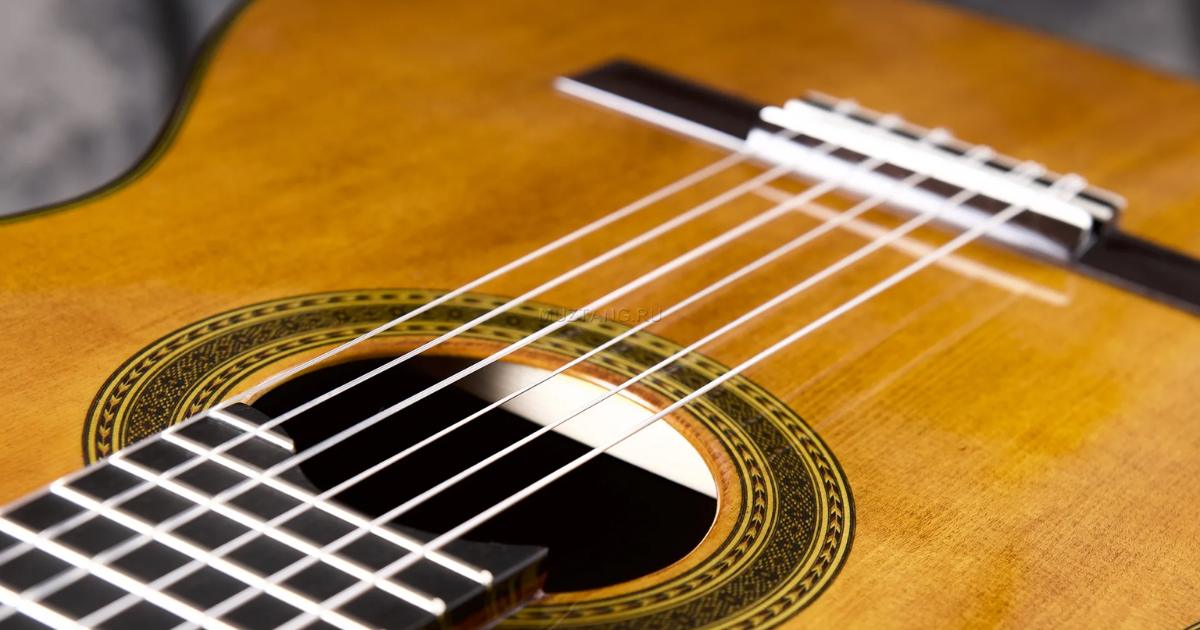Strings on an acoustic guitar refer to the thin wires stretched along the guitar’s body. They vibrate when plucked, creating musical notes. These strings are usually made of steel or nylon and come in various thicknesses, producing different tones. Acoustic guitar strings are vital for producing sound, and players can choose the type that suits their music style and preferences.
Have you ever wondered how many strings an acoustic guitar has? The answer is surprisingly simple yet fascinating. Most acoustic guitars come equipped with six strings, creating the beautiful harmonies that we love to hear. However, there are exceptions, with 12-string acoustic guitars offering a unique and enchanting sound. Whether it’s six or twelve, the strings of an acoustic guitar play a crucial role in crafting your favorite melodies.
The number of strings on an acoustic guitar not only affects the sound but also the playability and the types of music you can create. While six-string guitars are the most common and versatile, 12-string versions provide a richer, more resonant tone. Understanding the distinction between these options allows musicians to choose the instrument that best suits their style, creating a world of musical possibilities.
Standard Acoustic Guitar String Configuration
The most common configuration for an acoustic guitar is the standard six-string design. This configuration features six strings arranged in pairs, with three pairs of strings. Each pair consists of two strings tuned to the same note, but one is slightly thicker than the other. The tuning of a standard six-string acoustic guitar, from low to high, is as follows:
E A D G B e
- Low E: The thickest string and the lowest in pitch.
- A: The second thickest string.
- D: The third thickest string.
- G: The first string that is not paired with another string.
- B: The second thinnest string.
- High e: The thinnest string and the highest in pitch.
The standard tuning is often referred to as “E Standard,” and it is the tuning used in many popular songs and most beginner guitar lessons. This tuning, along with the use of a Clip-On Tuner For Acoustic Guitar, provides a balanced range of notes and allows for a wide variety of chord shapes and melodies.
Alternate Acoustic Guitar String Configurations

While the standard six-string configuration is the most common, there are several alternate string configurations used by musicians to achieve different sounds and playing styles. Let’s explore some of these alternate configurations:
1. Twelve-String Acoustic Guitars
One of the most well-known variations is the twelve-string acoustic guitar. As the name suggests, it has twelve strings, but they are arranged in six pairs. The tuning for a twelve-string acoustic guitar is similar to the standard six-string, but each string is paired with another that is tuned to the same note, creating a rich and lush sound.
E A D G B e
- Low E: The thickest string, paired with a second low E string.
- A: The second thickest string, paired with a second A string.
- D: The third thickest string, paired with a second D string.
- G: The first string that is not paired with another string.
- B: The second thinnest string, paired with a second B string.
- High e: The thinnest string, paired with a second high e string.
The twelve-string guitar produces a beautiful, chiming sound and is often used in folk, rock, and acoustic music to add depth and resonance to the music.
2. Seven-String Acoustic Guitars
While less common than the standard six-string and twelve-string acoustic guitars, seven-string acoustic guitars have gained popularity among musicians looking to expand their sonic possibilities. The addition of a seventh string allows for extended range and versatility.
B E A D G B e
- Low B: The seventh string, providing an extended lower range.
- E: The low E string.
- A: The second thickest string.
- D: The third thickest string.
- G: The first string that is not paired with another string.
- B: The second thinnest string.
- High e: The thinnest string.
Seven-string acoustic guitars are often favored by metal and progressive rock guitarists for their ability to explore lower notes and create a heavier, more intense sound.
3. Nylon-String Acoustic Guitars
Nylon-string acoustic guitars, also known as classical guitars, feature a unique string configuration. They have three treble strings (the highest-pitched strings) and three bass strings (the lower-pitched strings). The strings are made of nylon, which gives them a softer, mellower tone compared to steel strings.
E A D G B e
- High E: The highest-pitched string.
- B: The second highest-pitched string.
- G: The third highest-pitched string.
- D: The first bass string.
- A: The second bass string.
- Low E: The lowest-pitched string.
Nylon-string guitars are popular in classical and flamenco music, but they are also used in various other genres for their unique tonal qualities.
4. Resonator Guitars
Resonator guitars, often associated with blues and slide guitar playing, have a distinctive sound created by metal cones or resonators built into the body of the guitar. They typically come in two main configurations:
Single-Cone Resonator Guitars
- Single-cone resonator guitars have a single metal cone located directly beneath the bridge. This design produces a bright and focused sound.
Tri-Cone Resonator Guitars
- Tri-cone resonator guitars have three smaller metal cones, resulting in a more complex and harmonically rich tone.
Resonator guitars usually have three or four strings, and they are often tuned to open tunings to facilitate slide guitar techniques.
The Impact of String Configuration on Sound
The number and arrangement of strings on an acoustic guitar have a significant impact on the instrument’s sound and tonal characteristics. Here’s how different string configurations affect the sound:
1. Six-String Acoustic Guitars
- Balanced Sound: Standard six-string acoustic guitars offer a balanced sound with a wide tonal range. They are versatile and suitable for various music genres, making them an excellent choice for beginners and experienced players.
2. Twelve-String Acoustic Guitars
- Rich and Full Sound: Twelve-string guitars produce a rich, full, and resonant sound due to the doubling of strings. They excel at adding depth and complexity to chords and melodies. Their characteristic chime is a hallmark of their sound.
3. Seven-String Acoustic Guitars
- Extended Range: Seven-string acoustic guitars extend the lower range, allowing for deeper bass notes and heavier, more intense sounds. They are preferred by musicians looking for a wider range of notes to explore.
4. Nylon-String Acoustic Guitars
- Mellow and Warm Sound: Nylon-string guitars have a mellower and warmer sound compared to steel-string acoustics. They are favored for classical and fingerstyle playing due to their softer tonal qualities.
5. Resonator Guitars
- Distinctive and Metallic Sound: Resonator guitars produce a unique, metallic, and often twangy sound due to the metal resonator cones. They are well-suited for slide guitar and blues playing.
String Configuration and Playing Style
The choice of string configuration also affects the playing style and techniques used by guitarists. Different configurations lend themselves to specific playing approaches:
1. Six-String Acoustic Guitars
- Versatile for Strumming and Fingerpicking: Standard six-string acoustics are versatile and suitable for strumming chords and fingerpicking melodies. They accommodate a wide range of playing styles.
2. Twelve-String Acoustic Guitars
- Enhanced Chording and Arpeggios: Twelve-string guitars are excellent for chording and arpeggio-style playing, as the doubled strings create a lush and ringing sound.
3. Seven-String Acoustic Guitars
- Extended Range for Heavy Styles: Seven-string guitars are favored by guitarists who play heavy and extended-range styles. They provide additional depth for power chords and extended scales.
4. Nylon-String Acoustic Guitars
- Classical and Fingerstyle Techniques: Nylon-string guitars are commonly used for classical and fingerstyle techniques due to their soft tonal qualities, which are well-suited for intricate fingerpicking.
5. Resonator Guitars
- Slide Guitar and Blues Techniques: Resonator guitars are synonymous with slide guitar and blues playing. Their unique sound and metallic resonators make them ideal for these styles.
Common String Variations
In addition to the standard string configurations mentioned above, there are some common variations and adaptations that players might encounter:
1. Open Tunings
Open tunings involve tuning the guitar to a specific chord, which results in a set of open strings that create a full chord when strummed without fingering the fretboard. Common open tunings include Open D (D A D F# A D) and Open G (D G D G B D), among others. These tunings are favored for slide guitar and blues playing.
2. Alternate String Materials
While steel strings are the standard for acoustic guitars, some players experiment with alternate string materials, such as phosphor bronze and silk and steel, to achieve different tonal qualities.
3. String Gauges
String gauges refer to the thickness of the strings. Heavier gauges provide a richer and louder sound, while lighter gauges are easier to play and offer a brighter tone. Players often choose string gauges based on their playing style and preferences.
4. Custom String Configurations
Some players and luthiers experiment with custom string configurations, such as adding a high A string to a standard six-string guitar or creating hybrid configurations to achieve specific tonal goals.
Summary of Acoustic Guitar String Configurations
| Configuration | String Count | Tuning | Sound Characteristics | Suitable Styles and Techniques |
| Standard 6-String | 6 | E A D G B e | Balanced, versatile, wide tonal range | Strumming, fingerpicking, various genres |
| 12-String | 12 | E A D G B e | Rich, full, and resonant due to doubled strings | Chording, arpeggios, folk, and fingerstyle |
| 7-String | 7 | B E A D G B e | Extended lower range, heavier, intense sound | Heavy styles, power chords, extended scales |
| Nylon-String (Classical) | 6 | E A D G B e | Mellow, warm, softer tonal qualities | Classical, fingerstyle, intricate picking |
| Resonator (Single Cone) | 3 or 4 | Various open tunings | Distinctive, metallic, twangy sound | Slide guitar, blues |
| Resonator (Tri-Cone) | 3 or 4 | Various open tunings | Complex, harmonically rich tone | Slide guitar, blues |
| Common Variations | – | Various | Open tunings, alternate materials, gauges | Slide guitar, blues, tonal experimentation |
FAQs
How many strings does a typical acoustic guitar have?
A typical acoustic guitar has six strings.
Are there acoustic guitars with more than six strings?
Yes, some acoustic guitars have 12 strings for a unique sound.
Can I change the number of strings on my acoustic guitar?
While possible, it’s best to consult a professional for modifications.\
Conclusion
The number of strings on an acoustic guitar plays a crucial role in defining its sound, character, and versatility. Most acoustic guitars come with six strings, making them accessible for beginners and adaptable for various music genres. These six strings produce a well-balanced tone, suitable for a wide range of playing styles.
However, for those seeking a more resonant and distinctive sound, 12-string acoustic guitars offer a captivating alternative. The added strings create a lush and harmonic tone, making them particularly appealing to folk and fingerstyle guitarists. Whether you opt for the classic six-string or the enchanting 12-string, the choice of strings on an acoustic guitar significantly impacts the music you create. It’s important to select the right number of strings that aligns with your musical preferences and goals. So, whether you’re strumming your way through ballads or picking out intricate melodies, the number of strings on your acoustic guitar is a fundamental aspect of your musical journey.




